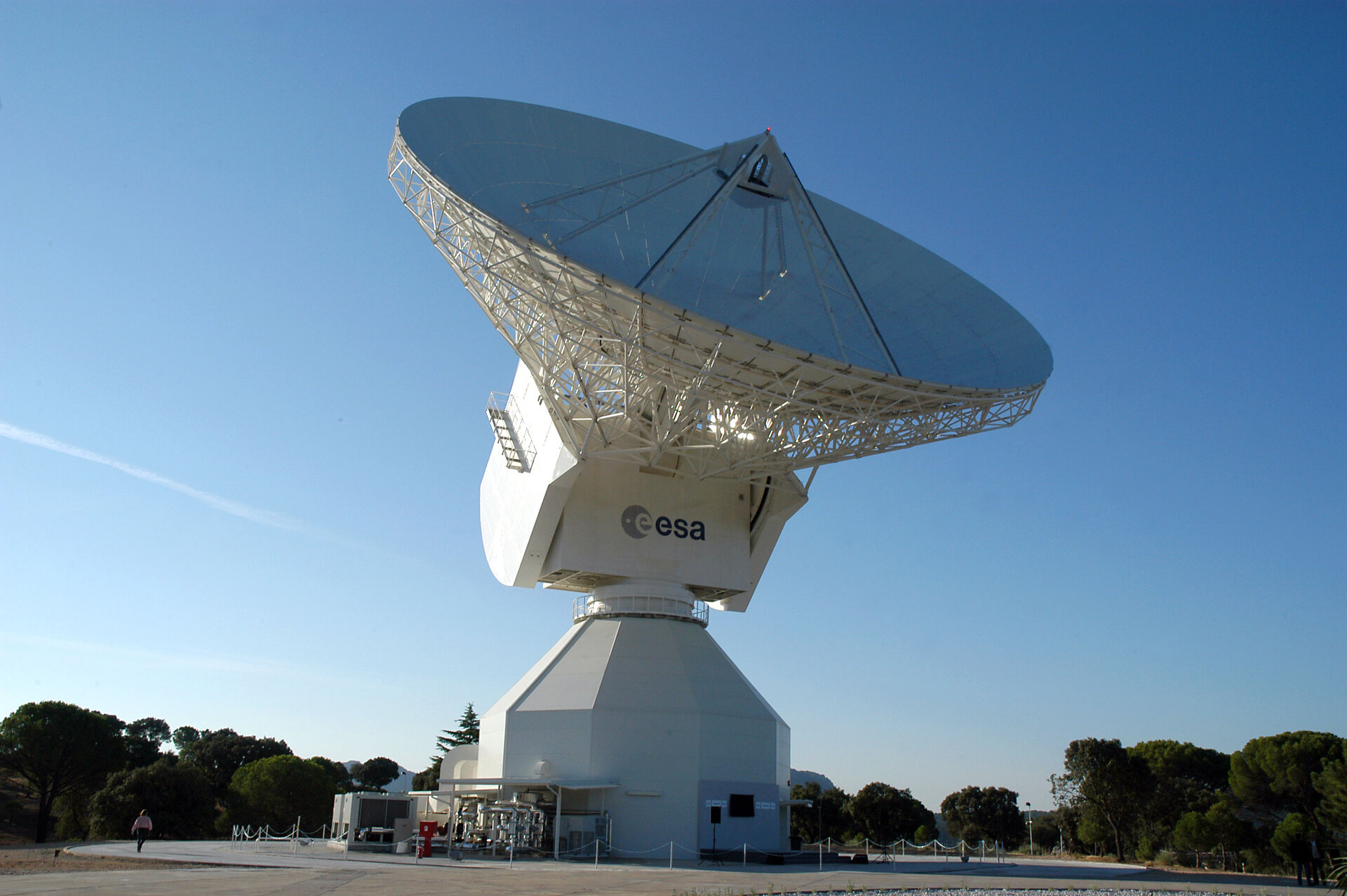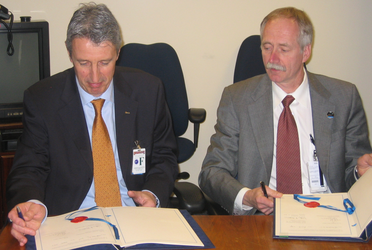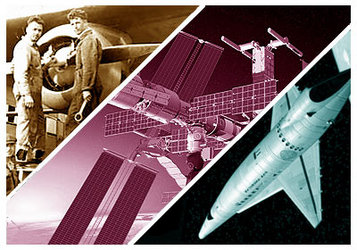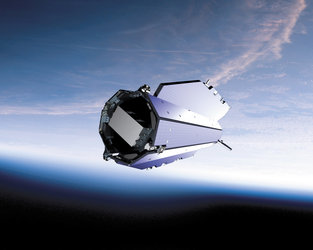Future deep-space missions drive ESA ground station evolution
An international workshop being held at ESOC has highlighted the potential to develop the 'ESTRACK' ground station network into a more cost-efficient, high-tech system while offering significant opportunities to private industry, as well as cooperation with academia.
Speaking at the TTC 2007 Workshop, managers at ESOC, ESA's European Space Operations Centre, have given engineers, scientists and managers from partner agencies, academia and industry an insight into possible future developments of the Agency's ESTRACK ground station network.
"We foresee a new evolution for ESTRACK based on the potential to shift operation of some stations to commercial operators, who could exploit economies of scale using the stations' mature technologies," said Jean-Francois Kaufeler, Head of Ground Systems Engineering at ESOC.
His comments came on the opening day of the 4th ESA International Workshop on Tracking, Telemetry and Command Systems for Space Applications being held at ESOC this week.
The ESTRACK (ESA Tracking) network consists of eight core stations located in Europe, Australia and South America.
ESTRACK: eight core stations on three continents
Six of these, located in Kourou (French Guiana), Maspalomas, Villafranca (Spain), Redu (Belgium), Kiruna (Sweden) and Perth (Australia), comprise smaller antenna terminals, typically 15 metres in diameter, using tried-and-proven communications technology.
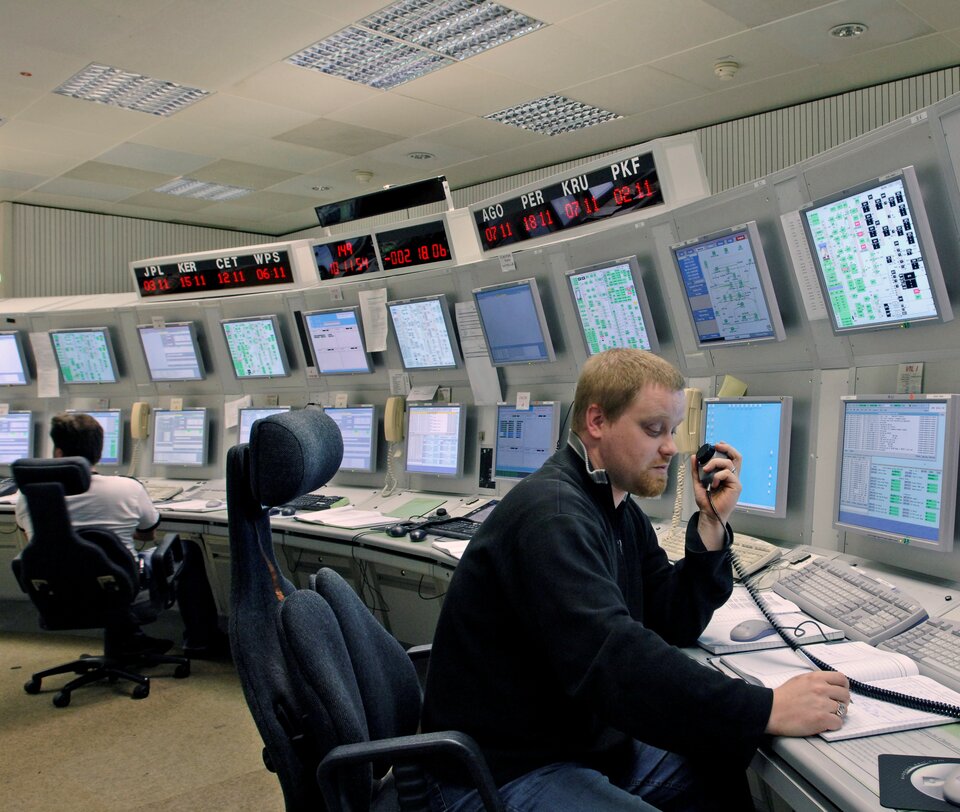
These stations provide ground controllers at ESOC and at partner agencies the ability to transmit telecommands to spacecraft and receive scientific data and telemetry; stations also enable services such as range determination, Doppler measurements to determine the spacecraft's trajectory, and testing and simulation.
These stations can communicate with satellites in a variety of orbits, including low-Earth, highly-eccentric, geostationary and near-interplanetary, such as orbits about the Sun or Moon.
These 'classic' ESTRACK services represent a mature set of space services that could be provided efficiently to almost any governmental agency or commercial spacecraft operator as a customer.
Delta-DOR is one of our new deep-space capabilities that meet the requirements of future missions, not only for ESA but also for our international partners.
In contrast, the two newest ESTRACK stations - DSA (Deep Space Antenna) 1 at New Norcia, Australia, and DSA 2 at Cebreros, Spain - comprise giant 35-metre antenna terminals; ESA plans to build a third DSA station at an American longitude in the 2010 timeframe to provide optimised coverage.
ESA's deep-space stations match future requirements
The new DSA stations are capable of tracking and ranging spacecraft in deep space, potentially exceeding hundreds of millions of kilometres from Earth, and are equipped with sophisticated new technology that enable scientists to conduct radio science experiments and determine spacecraft location using the highly precise 'Delta-DOR' technique.
"Delta-DOR is just one highlight of our new deep-space capabilities that meet the requirements of future missions, not only for ESA but also for our international partners," says Nicolas Bobrinsky, a ground stations expert at ESOC and Chairman of the TTC 2007 Workshop.
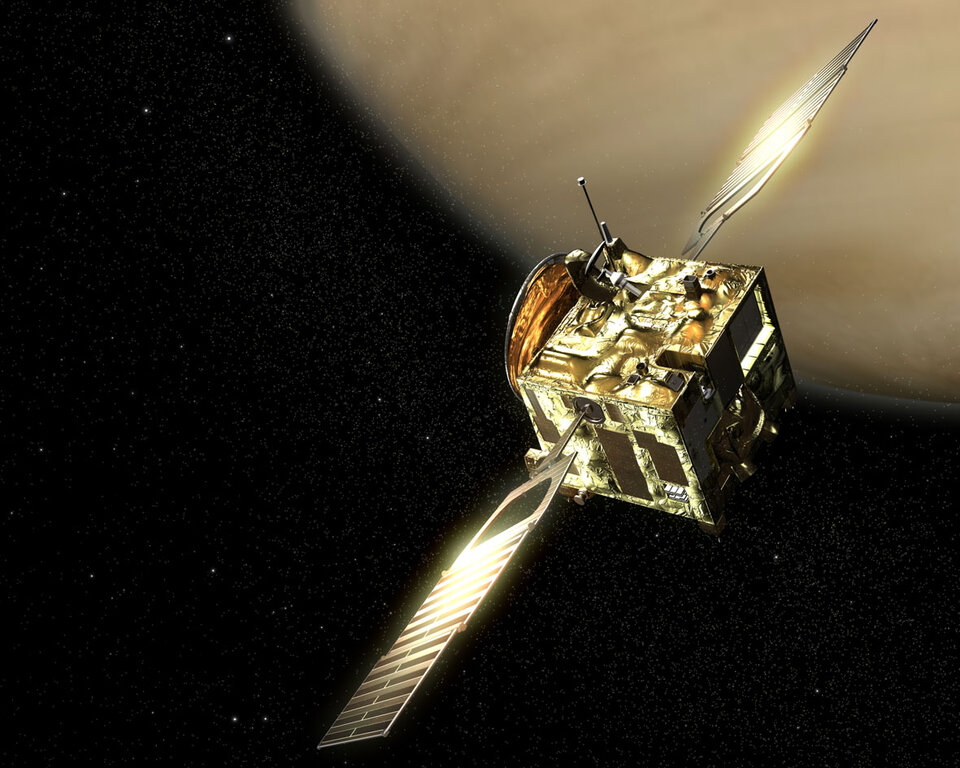
Due to the large size of their antenna reflectors - 35 metres - and enhanced electronic sensitivity, DSA stations can receive more data at substantially higher rates from distant science and exploration missions, such as Venus Express and the comet-chaser Rosetta, compared to the 15m stations; they also use advanced mechanical stabilisation technologies as well as cryogenic cooling and dichroic mirrors.
In the future, planned ESA missions will require more of these advanced DSA station capabilities and less of the classic services.
Strong business potential
As a result, ESOC managers believe there is strong business potential if operation of the smaller ESTRACK stations evolves on a commercial basis, where in some cases a transfer of ownership to a private operator could be considered.
"Such an evolution would follow previous highly successful spin-offs of ESA technology that have benefited industry, including the creation of a commercial launcher operator for Ariane and the establishment of EUMETSAT, the European Organisation for the Exploitation of Meteorological Satellites, to provide dedicated weather services," said Kaufeler.

Kaufeler says that this evolution for ESTRACK would allow the ESA owned-and-operated DSA stations to continue serving as research test beds for new tracking technologies and techniques focussing on scientific deep-space missions, while the smaller stations could be used to offer commercial tracking services.
"This would give private industry an excellent business opportunity based on mature technology, enhanced efficiency and proven capabilities," he added.
The 15m stations will, however, remain indispensable during the critical early phases of ESA missions, regardless of how they are operated.
"The evolution of the ESTRACK system must be planned in consideration of the overall evolution of tracking and ground station technology, which includes confirmed trends towards higher frequency bands, greater stability and more precise location requirements. For ESTRACK, this also means responding to the stringent requirements of the missions envisaged in ESA's 'Cosmic Vision' long-term plan," says Bobrinsky.
International harmonisation and cooperation
Another key theme emerging from the Workshop is that of international cooperation and standardisation.
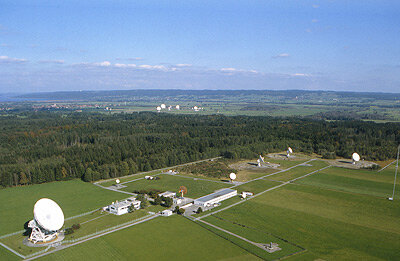
"Like everyone, Germany is sharing ground stations in order to rationalise resources and boost efficiency. We've worked with the Indians, ESA, the Italian space agency ASI and the Swedish Space Corporation, among others. It's absolutely essential," says Martin Pilgram, a ground stations expert at DLR, the German Aerospace Center, and one of the Workshop organisers.
See related ESApod audio programme linked on this page.
TTC 2007 Workshop
The workshop is being attended by more than 250 delegates from over 20 countries and continues at ESOC through Friday.


